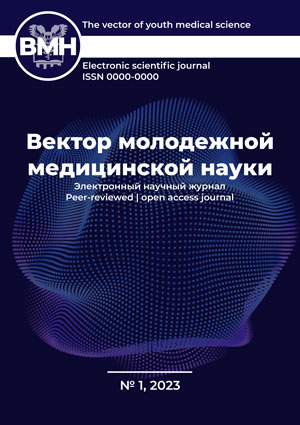
The magazine «Vector of young medical science» was founded in 2023 at Kursk State Medical University on the initiative of the Council of the University Student Scientific Society under the leadership of the curator of the SSS, Doctor of Medical Sciences. Associate Professor P.V. Tkachenko.
The decision to establish the journal was a natural result of the long work of its developers in the field of covering the results and achievements of student science.
«Vector of young medical science» is a publication aimed at publishing scientific works of young scientists and researchers in the field of medicine and healthcare. One of the main objectives of the journal is to ensure the dissemination of promising scientific data and groundwork among young scientists.
The journal is included in the list of publications included in the Russian Science Citation Index (RSCI).
The main headings of the scientific publication are: clinical medicine, biomedical sciences, pharmaceutical sciences, biotechnology and genetics.
The publication frequency is once every 4 months and includes about 30 original scientific publications.
Editor-in-chief – Pavel Vladimirovich Tkachenko – Doctor of Medical Sciences, member of the Russian Physiological Society named after. I.P. Pavlova, professor and corresponding member. Russian Natural Science Academy, director of the Research Institute of Physiology KSMU.







